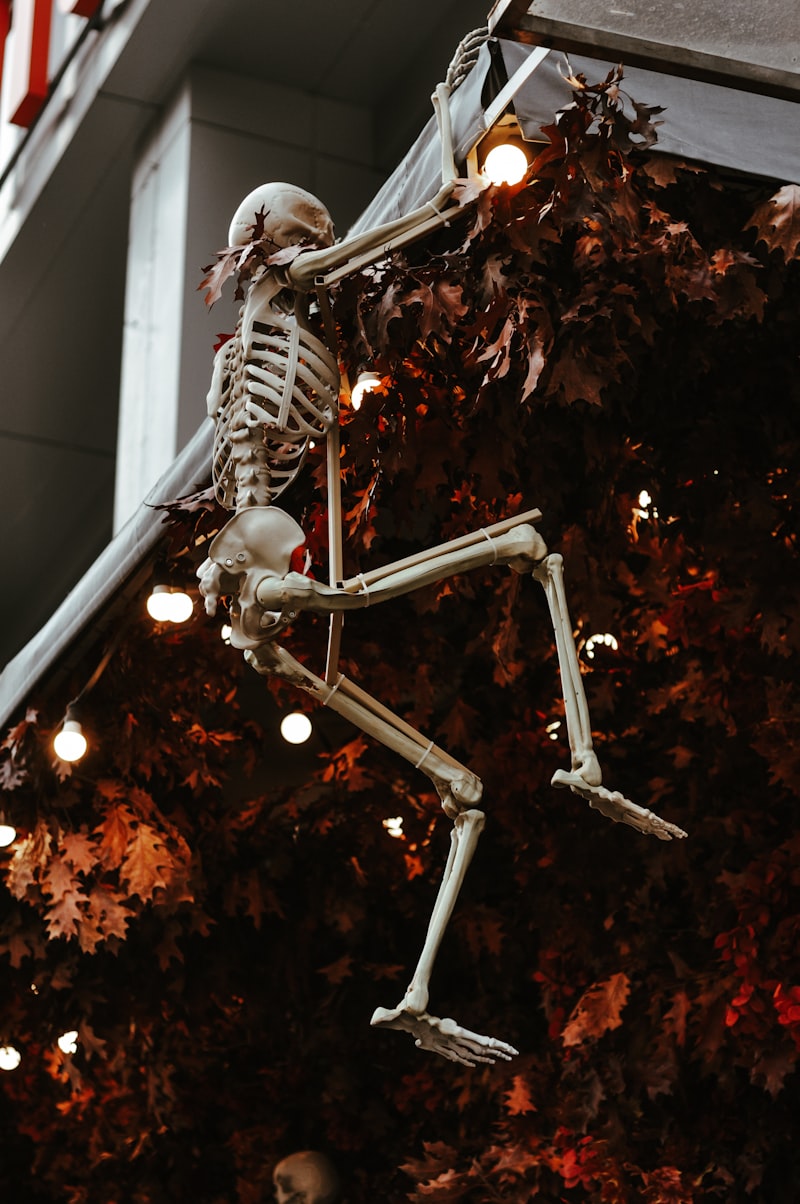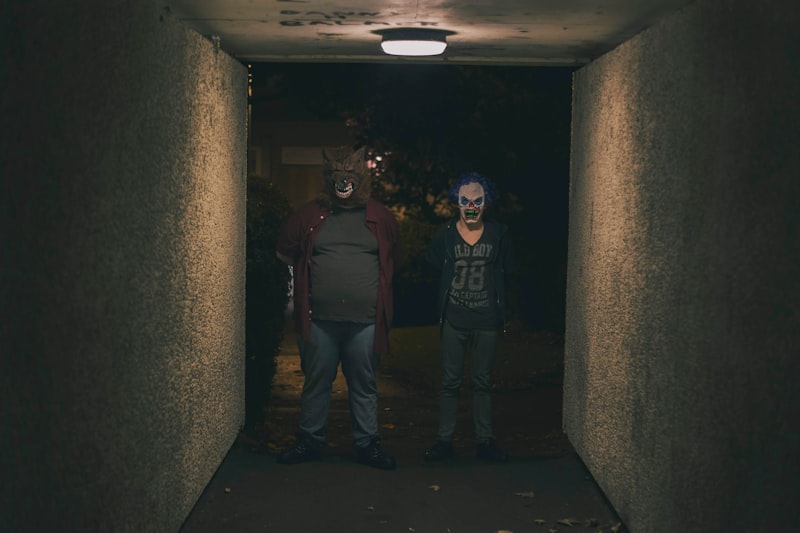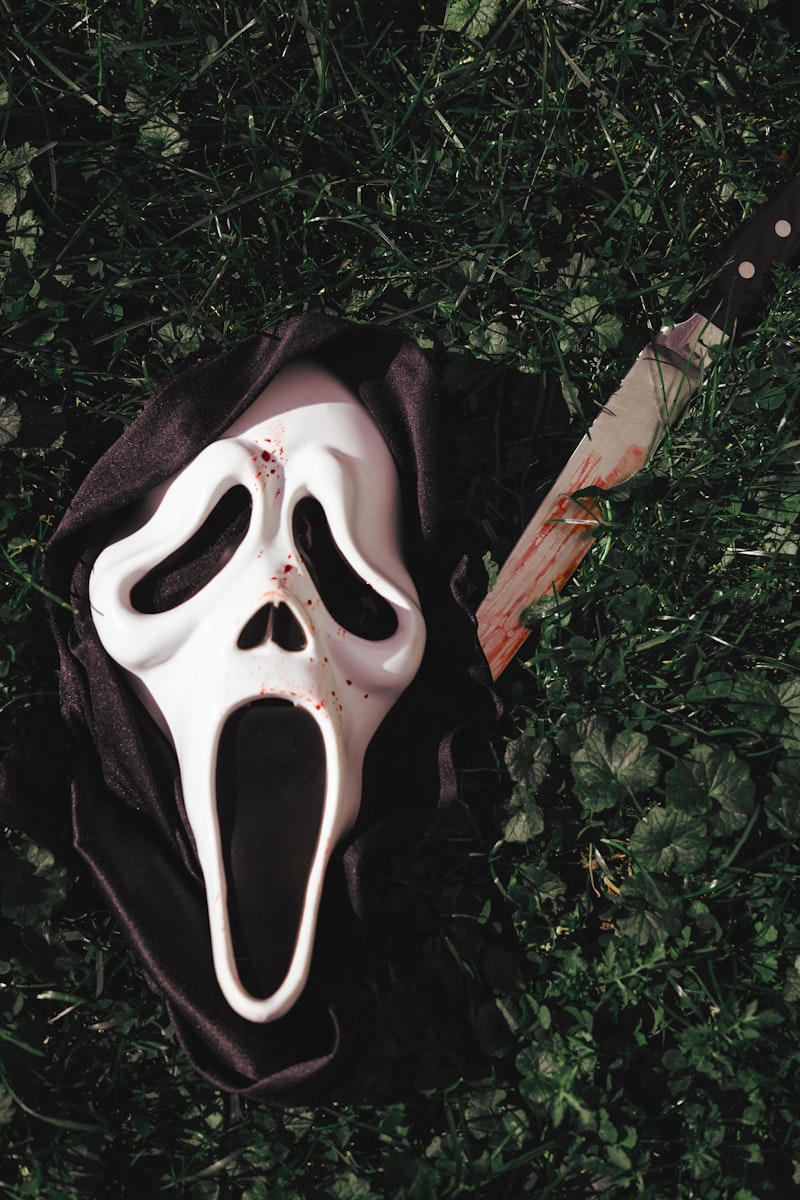Have you ever wondered about the eerie tales that swirl around famous historical figures? From whispered legends to chilling anecdotes, history is brimming with stories that blur the line between fact and fiction. Take for instance, the infamous Vlad the Impaler, whose ruthless reputation earned him the nickname Dracula. Legends speak of his penchant for impaling enemies and displaying them as a warning to others, inspiring Bram Stoker’s iconic vampire character.
Moving through history, the mysterious disappearance of Ambrose Bierce, a renowned American author and journalist, continues to perplex and haunt. Bierce vanished without a trace in Mexico in 1914, leaving behind a legacy tinged with speculation and ghostly tales. Some claim he met a supernatural fate, while others suggest a more sinister end.
Another haunting figure is Elizabeth Bathory, a Hungarian countess rumored to have bathed in the blood of young virgins to maintain her beauty. Known as the “Blood Countess,” her story has inspired countless horror tales and serves as a cautionary tale of vanity taken to monstrous extremes.
Then there’s Rasputin, the enigmatic advisor to the Russian royal family, whose mystique and alleged supernatural abilities fueled rumors of his invincibility. Surviving multiple assassination attempts, Rasputin’s death became a subject of macabre fascination, with stories of poison, gunshot wounds, and even drowning in icy waters.
These chilling legends not only add layers of intrigue to history but also reflect the darker aspects of human nature and society’s fascination with the supernatural. Whether rooted in truth or embellished over time, these stories continue to captivate imaginations and remind us that sometimes reality is stranger—and spookier—than fiction.
Ghosts of the Tower: The Haunting Tale of Anne Boleyn’s Apparition
Anne Boleyn, the enigmatic second wife of King Henry VIII, met an untimely end within the Tower’s formidable walls. Accused of treason and adultery, she faced a fate that shocked the Tudor court and reverberates through the annals of British history to this day. It is said that on the night of May 19th, 1536, Anne was led to Tower Green, where she was executed by a skilled French swordsman. Her death marked a turning point in English history, forever altering the course of the monarchy and leaving an indelible mark on the Tower of London.

Visitors to the Tower have reported eerie encounters with Anne Boleyn’s apparition. Descriptions vary, but many claim to have seen a ghostly figure resembling a woman in Tudor-era attire, sometimes carrying her own severed head in her arms. The sightings often occur in the vicinity of the Chapel Royal of St. Peter ad Vincula, where Anne Boleyn and other notable prisoners were laid to rest.
What compels Anne Boleyn’s spirit to linger within the Tower’s ancient walls? Some speculate that her unresolved grievances or tragic end tether her to this world. Others believe that such intense historical events imprint themselves on the fabric of a place, creating a psychic echo that transcends time.
The Tower of London itself, with its grim reputation as a place of imprisonment and execution, provides a fitting backdrop for such spectral tales. As one wanders through its cold stone corridors and peeks into its darkened chambers, it’s easy to imagine the whispers of the past intertwining with the present. The stories of Anne Boleyn and other historical figures who met their end here continue to capture the imagination, ensuring that their legacies endure even beyond death.
The Curse of Tutankhamun: Unraveling the Mysterious Deaths Linked to the Pharaoh’s Tomb

Legend has it that anyone who disturbs the pharaoh’s resting place will face a curse, bringing misfortune, illness, or even death upon themselves. This belief was fueled by the untimely demise of Lord Carnarvon, Carter’s financial backer, shortly after the tomb’s opening. Carnarvon’s death due to an infected mosquito bite raised suspicions and led to speculation about the curse’s validity.
Further deaths of individuals connected to the tomb, including archaeologists and researchers, added to the mystique. Each passing fueled public imagination and perpetuated the idea of a curse. However, scientific minds argue that these deaths can be attributed to natural causes, such as infections and pre-existing health conditions.
The fascination with Tutankhamun’s curse persists in popular culture, inspiring books, movies, and documentaries. It symbolizes humanity’s eternal fascination with the supernatural and the unknown, blending historical fact with mythical allure.
In modern times, archaeological studies have shed light on Tutankhamun’s life and reign, offering a more nuanced understanding of ancient Egyptian culture. Advances in technology have enabled researchers to explore the tomb’s contents without fear of supernatural consequences, unraveling its treasures and historical significance.
Rasputin’s Legacy: The Strange Rumors and Supernatural Myths
Imagine a figure so compelling that his presence alone sparked wild speculation and fascination. Rasputin, with his piercing gaze and reputed ability to heal the Tsar’s hemophiliac son, captured the imagination of an empire. His methods, often unconventional and mysterious, only added to the allure surrounding him.
In the realm of the supernatural, Rasputin’s story takes on an almost mythical quality. Legends suggest he possessed powers beyond mortal understanding, able to foresee events and manipulate outcomes. Tales of his survival against all odds, including poisoning and assassination attempts, only bolstered his reputation as an otherworldly figure.
But amidst the mystique lies controversy. Critics labeled Rasputin a charlatan, condemning his influence over the Russian court as nefarious. His unorthodox behavior and rumored debauchery fueled scandal and speculation, painting a portrait of a man at once revered and reviled.
Even in death, Rasputin’s legacy endures. The circumstances of his demise, a dramatic and brutal affair involving poison, gunfire, and drowning, cemented his place in history as a figure of fascination and fear. His story continues to captivate storytellers and historians alike, each interpretation adding layers to his complex legacy.
In the annals of history, Rasputin remains a tantalizing enigma—a man whose life blurred the lines between reality and myth, leaving behind a legacy that continues to intrigue and mystify.
The Phantom of Napoleon: Eerie Encounters at Elba
Have you ever wondered about the lingering mysteries surrounding historical figures? Napoleon Bonaparte, the iconic French emperor, left a legacy that extends beyond his deeds on the battlefield. One of the lesser-known yet intriguing aspects of his life revolves around his time on the island of Elba. This Mediterranean gem, nestled off the coast of Italy, served as Napoleon’s first place of exile after his abdication in 1814.
Elba, with its rugged coastline and quaint villages, became a stage where history intertwined with the supernatural. Legends speak of eerie encounters and sightings linked to Napoleon’s ghost. Locals and visitors alike have reported strange occurrences—a fleeting shadow resembling the emperor, glimpsed in the corridors of his former residence, the Palazzina dei Mulini.
These tales evoke a sense of wonder and curiosity. Could it be that Napoleon’s restless spirit still roams the island, perhaps seeking solace or resolution? The Phantom of Napoleon, as it’s come to be known, continues to intrigue historians and paranormal enthusiasts alike.
Imagine strolling along Elba’s tranquil beaches, where whispers of the past mingle with the gentle sea breeze. It’s here that one can almost feel the presence of a man who shaped nations, now immortalized in both history books and local folklore. The island’s charm juxtaposed with these ghostly tales creates a unique allure—one that beckons adventurers and historians to explore beyond the surface.
As you navigate Elba’s winding paths and historic landmarks, ponder the legacy of Napoleon and the mysteries that endure. Could these stories be mere figments of imagination, or is there more to the tales whispered by those who call Elba home? The Phantom of Napoleon reminds us that history is alive, woven into the fabric of places like Elba, where the past and present intertwine in fascinating ways.
This article aims to capture the intrigue and fascination surrounding Napoleon’s ghostly presence on the island of Elba, engaging readers with its blend of history and mystery.
Bloody Mary: Fact or Fiction? Exploring the Sinister Tale of Queen Mary I
Queen Mary I of England, reigning from 1553 to 1558, earned her bloody moniker through her relentless persecution of Protestants. Her fervent attempts to restore Catholicism led to the execution of around 300 heretics, burnt at the stake in what became known as the Marian Persecutions. It’s a dark chapter in history, but does it justify the spine-chilling legend that haunts our mirrors?
Interestingly, the folklore of Bloody Mary seems to blend historical fact with chilling fiction. The story goes that if you stand in a dark room and chant her name three times into a mirror, her ghostly apparition will appear, often depicted with blood dripping down her face. This tale plays on our deepest fears, but its origins are more psychological than supernatural.
Folklorists suggest that the Bloody Mary legend is a form of catoptromancy, or divination using mirrors. In the 19th century, it was believed that young women could glimpse their future husband’s face in the mirror if they performed a series of rituals. Over time, this morphed into a spooky game, particularly popular at sleepovers, evolving into the Bloody Mary we know today.

So, is Bloody Mary fact or fiction? While Queen Mary I’s bloody reign is historically accurate, the spectral mirror antics are likely the result of our collective imagination. It’s a blend of true history and eerie storytelling that keeps the legend alive. Next time you find yourself in front of a mirror, will you dare to summon Bloody Mary, or let the tale remain a shivery piece of folklore?
Dracula’s Origins: The Real-Life Inspiration Behind Bram Stoker’s Vampire Legend

Bram Stoker’s iconic novel “Dracula” has enthralled readers for generations, but what inspired this timeless tale of horror? The origins of Dracula trace back to a blend of history, myth, and the author’s vivid imagination. At the heart of Stoker’s creation lies the enigmatic figure of Vlad the Impaler, a 15th-century prince known for his brutal tactics and ruthless demeanor.
Vlad III, also known as Vlad Dracula or Vlad Tepes, ruled Wallachia, a region in modern-day Romania, during a tumultuous period of medieval history. His fearsome reputation stemmed from his penchant for impaling his enemies on stakes, a method intended to strike terror into the hearts of would-be invaders. This gruesome practice earned him the moniker “Vlad the Impaler” and contributed to his enduring legacy as a figure of terror.
Stoker drew upon accounts of Vlad’s cruelty and his reputation as a defender of his homeland against the Ottoman Empire’s expansion. Vlad’s fierce determination and tactics to protect his people left a lasting impression on Stoker, who wove elements of Vlad’s character into the portrayal of Count Dracula, the novel’s immortal antagonist.
Beyond Vlad the Impaler, Stoker also drew inspiration from Eastern European folklore surrounding vampires. Tales of creatures that rise from the grave to feed on the blood of the living were prevalent in the region. Stoker amalgamated these folkloric elements with Vlad’s historical persona to create a vampire who was both captivating and terrifying—a figure who embodies both the allure and horror of the undead.
In “Dracula,” Stoker masterfully crafted a narrative that transcends time and continues to captivate audiences today. The novel’s enduring popularity speaks to its ability to tap into primal fears and desires, exploring themes of mortality, desire, and the struggle between good and evil. Through Count Dracula, Stoker gave form to the darkness that resides within us all, inviting readers to confront their deepest fears in the safety of fiction.
As we delve into the origins of Dracula, we uncover a tapestry woven from history, myth, and the boundless imagination of Bram Stoker. The legacy of Vlad the Impaler and the rich tapestry of vampire lore converge in “Dracula,” ensuring that its shadow will continue to loom large over the landscape of horror literature for generations to come.
The Wailing Woman of Mexico: La Llorona’s Haunting Story
Legend has it that La Llorona was once a young woman named Maria, known for her beauty and charm. She fell deeply in love with a man of lower status, and they bore two children together. However, consumed by jealousy and rage when her husband left her for another woman, Maria drowned her children in a fit of despair. Realizing the gravity of her actions, she searched frantically but could not find their bodies.
In the afterlife, condemned to eternal unrest, La Llorona’s ghost wanders the earth, searching for her lost children. It is said that her ghastly cries can still be heard near bodies of water, especially at night, as she weeps and laments her irreversible deed.
The tale of La Llorona serves as a cautionary story, warning against jealousy and the consequences of unchecked emotions. It is a narrative deeply ingrained in Mexican culture, passed down through oral tradition to impart moral lessons to children and adults alike.
Throughout history, numerous sightings and encounters with La Llorona have been reported, adding to her legend and perpetuating the fear associated with her haunting presence. Whether one believes in her existence or views her as a metaphor for grief and loss, the story of La Llorona continues to captivate minds and evoke emotions, stirring curiosity about the supernatural and the mysteries of the human psyche.
Frequently Asked Questions
What creepy myths and rumors persist about famous historical personalities?
Discover intriguing myths and rumors surrounding renowned historical figures. Uncover eerie tales and legends that have persisted through time, offering a glimpse into the mysterious and often unsettling stories linked to these iconic individuals.
Can you share some unsettling stories linked to renowned figures from history?
Explore unsettling stories associated with famous historical figures, revealing lesser-known aspects of their lives and actions.
Which famous historical figures are surrounded by spooky tales?
Discover famous historical figures whose lives are shrouded in spooky tales, from Rasputin’s mystical influence over the Russian monarchy to the eerie legends surrounding Elizabeth Bathory’s alleged crimes and Count Dracula’s inspiration from Vlad the Impaler.
What are the most chilling legends associated with historical icons?
Explore the eerie tales and chilling legends surrounding historical icons, from cursed artifacts to mysterious disappearances. Uncover the haunting mysteries that have fascinated generations.
What are some eerie myths about well-known historical figures?
Discover intriguing myths surrounding famous historical figures, ranging from secret identities to supernatural encounters. Explore lesser-known tales that add an eerie twist to their legacy.



